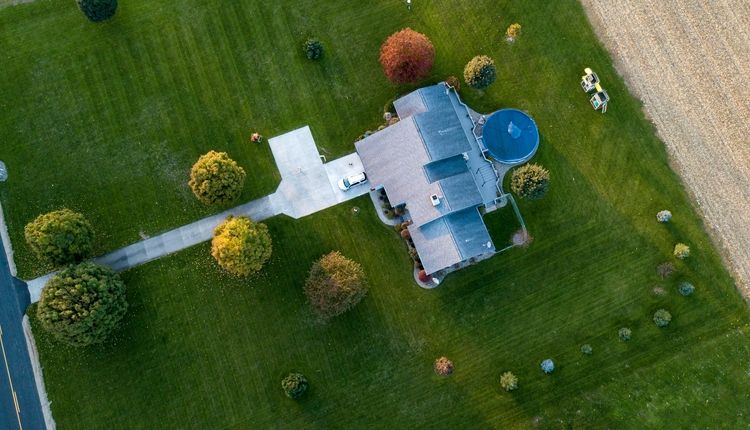Wrap Insurance Program
from Southern Colorado Insurance Center
Wrap Insurance Colorado
Today’s restrictive General Liability Insurance climate requires creativity when working with new construction developments. Southern Colorado Insurance Center has the knowledge and experience to quote any construction project under a Wrap policy or OCIP (Owner Controlled Insurance Program) and would love to assist Independent Agents with their new construction leads.
Our carriers are recognized as industry leaders nationally multifamily projects are highly desired - most subcontractors have multifamily exclusions.
- Low minimum premiums
- Various deductible/SIR op ons available
- 12 to 48 month policy terms - op ons for the policy to respond to project “phases”
- Rolling Wrap programs available
- Integrated risk management vendors - Third Party Administrators and QA/QC companies
- Pollution Wrap policies, Builder’s Risk, and Excess Liability also available
Why Choose a Wrap?
- Assured coverage for all subcontractors
- One defense representation in the event of a loss
- No fault allegations to be determined in the event of a loss
- Common goals shared by all subcontractors - cooperative risk management, safety, and quality work
- Completed Opera ons extended to statute of repose
- Third Party Administrator services ease troublesome subcontractor contract coordination
- Subcontractor premium recovery - Owner/Contractor doesn’t need to cover the total premium cost
Get a quote for WRAP insurance in Colorado!
Assured coverage for all subcontractors - Unlike the typical general liability, an OCIP (Owner Controlled Insurance Program) provides coverage in the name of the owner, but extends coverage to the General Contractor and all subcontractors (including subs of subs) in Colorado. With the traditional General Liability model, all parties typically would have to get their own insurance for their work and Owners/GC’s would rely on risk transfer indemnification agreements, Additional Insured and other endorsement languages so that when a claim occurs, the downstream party (and their insurer) is obligated to step up to the table. In theory, this works great, but Colorado’s environment is such that it is almost impossible for a subcontractor or builder to find adequate coverage for multifamily work. Colorado is one of the top 3 most litigious construction defect states in the country and as a result, you have less insurers willing to provide coverage for all parties and virtually no insurers for multifamily projects above ten units. So while the sub may have a policy with indemnification on language, a multifamily exclusion likely exists and all of the responsibility of damages would then be left on owners & general contractors. Colorado WRAP insurance takes care of this in that all parties are covered under the policy, so these gaps are eliminated.
One defense representation in the event of a loss - “all for one and one for all coverage” - Everyone obtains coverage, but importantly all parties have one carrier representing them at me of loss. At me of claim, it is very common to have “Shotgun Lawsuits” in Colorado. Several parties can be named as Defendants even if they had no contribution to the alleged defect. (We’ve seen interior trim contractors named in suits where there was a concrete/foundation issue). Under that traditional GL model, each party is representing themselves and their interests (potentially se ling at high amounts) only which can significantly drive up the cost and length of the suit. Under an OCIP insurance, one insurer represents all and, in theory, could make the claim process quicker and less costly.
Common goals shared by all subs – cooperative risk management, safety, and quality work. Since all parties are insured through OCIP insurance policy, there is an intrinsic benefit to all parties working more collaboratively towards quality work and safety. All have skin in the game under the same policy, so quality workmanship standards by all are hopefully met.
Completed Operations Extended to Statute of Repose – This is a major benefit to the wrap as it is truly a “project specific” policy. Under a traditional occurrence policy, the carrier that is supposed to respond to a claim is the carrier insuring the entity when “damages occur”. You could build a structure today, then damages are proven to occur well down the road and not at me of construction (or somewhere in between). Thus, it is important for all parties involved in a project to maintain coverage not only during the project, but throughout the statute of repose which is eight years in Colorado so that no coverage gaps happen. Colorado WRAP insurance takes care of all of this in that it contains an endorsement that says it will respond to claims throughout the course of construction, but also after the job is complete up to that statutory period’s expiration. Thus, construction defect are covered for all after the project is done under an owner-controlled insurance policy. You can see how issues may arise when the Owner, GC, or Subs don’t maintain adequate coverage under a traditional GL policy, or even go out of business.
3rd Party Admin Services – A Colorado WRAP policy will typically require Administration Companies get involved to enroll all subs, issue them evidence of coverage through the WRAP, and other items. The administration process alone is very tedious and thus third parties are available to assist.
Subcontractor premium recovery – It is common for subcontractors to contribute to the premium since all subcontractors obtain coverage through WRAP insurance. There are several methods used so this can be accomplished and of course we work with Owners/GC’s to maximize this recovery.
Removal of “workmanship” or “faulty work” exclusions - The traditional GL often does not provide coverage for “faulty work” in itself, a resulting damage (bodily injury or property damage) must occur because of the faulty work to trigger a claim. Now, some courts say coverage is provided for “faulty work” for the GC if a sub does the work, other rulings disagree. Of course, each insurance company also has its own position on this too. Rather than worry about this, an OCIP policy can be purchased and the “faulty work” exclusions are traditionally removed. So in theory, what may be labeled as “defects” may be covered under the insurance.

 Get a
Get a 





